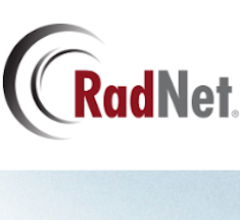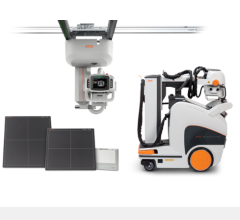Lung cancer is the most common form of cancer found today. There are two primary types - small cell and nonsmall cell. The National Cancer Institute (NCI) estimates that in 2010, more than 157,300 men and women died of the disease in the United States. With the mortality rate continuing to rise, NCI recently conducted the broadest, most comprehensive lung cancer research study to date. It began the National Lung Screening Trial (NLST) - a randomized national trial which involved more than 53,000 current and former heavy smokers ages 55 to 74, in 2002. The study compared the effects of two screening procedures for lung cancer using both low-dose helical computed tomography (CT) and standard chest X-ray. (1)
By January 2004, the NLST had recruited patients from more than 30 sites across the U.S. Study participants were randomized to receive either a standard chest X-ray or low-dose spiral CT scan once a year for five years. Each participant's health was then monitored annually until 2009. In November 2010, NCI determined that the NLST had collected enough data to publish its initial results. When NCI halted the study, it had found that a total of 354 deaths from lung cancer had occurred among participants in the CT group, whereas a significantly larger number (442) of lung cancer deaths had occurred among those who received standard chest X-rays. The findings revealed for the first time that early detection for lung cancer can save lives.
While the initial findings concluded that spiral CT scans are more effective at identifying lung cancer than a standard X-ray (by 20 percent), NCI has not yet provided guidance to doctors and radiologists on a new standard protocol for screenings. As data from the NLST study are further evaluated and protocols for screening are established, there are several questions that remain about the risks associated with the vast adoption of CT scans as a screening tool for patients. When developing guidelines, there are three key areas to consider: patient access to low-dose spiral CT scans, financial expense for both the patient and hospital, and the impact CT's increased radiation dose has on a patient.
Patient Access to Spiral CT
According to Revolution Health, only 60 percent of U.S. hospitals have access to a spiral CT scanner. 2 While the numbers continue to grow, there are questions about how many patients, particularly in rural communities, will have access to CT. Chest X-rays, however, are a ubiquitous technology available in every hospital and in many doctors' offices.
Financial Expense of CT Scans
Medicare and third-party insurance payors do not currently reimburse for CT or chest X-rays as screening tools. A chest X-ray exam costs around $45, while a CT is typically more than $300. This represents a six-times differential in a very cost-conscious medical environment. In addition, in 2010 the Centers for Disease Control and Prevention (CDC) reported that 46.3 million Americans, or about 15.4 percent, did not have health insurance coverage. 3 This lack of coverage could place regular CT screenings out of financial reach for many high- and low-risk patients.
Radiation Dose Levels
In the last two years, radiation exposure has made headline news, with several new studies suggesting Americans receive too many CT scans. Compared to a traditional chest X-ray, low-dose CT delivers 15 times the radiation dose. This increased radiation exposure is dangerous and can actually increase the risk of lung cancer. Many organizations are recognizing the risk of exposing patients to additional radiation. At the Radiological Society of North America's (RSNA) annual meeting at the end of 2010, attendees were encouraged to join the Image Wisely campaign. The project, supported by the American College of Radiology (ACR)/RSNA Joint Task Force on Adult Radiation Protection, seeks to raise awareness of opportunities to eliminate unnecessary imaging examinations and to lower radiation in necessary imaging examinations to only that needed to acquire appropriate medical images.
Chest X-Ray with CAD an Alternative
The NLST study started in 2002 and did not take into consideration the latest advancements in enhanced chest imaging technology, such as computer-aided detection (CAD). In 2010, the Riverain Medical OnGuard and SoftView software applications were cleared by the U.S. Food and Drug Administration (FDA) and help significantly improved the visibility of nodules on chest X-rays. OnGuard chest X-ray CAD is a solution for identifying nodules that may be early-stage lung cancer. The newest FDA-cleared version offers superior marking capabilities with a 73 percent reduction in false positives and 50 percent relative improvement when compared to the previous version. OnGuard places a circular marker around the lung nodule, acting as a second set of eyes for the radiologist. SoftView suppresses the ribs and clavicles, improving the visibility and detection of lung nodules in chest X-rays. Studies have shown that with the early detection of lung cancer, five-year survivability rates can triple. These software tools can help radiologists detect lung cancer at its earliest and most treatable stage.
Steve Worrell is the chief technology officer of Riverain Medical and a developer of advanced visualization technologies for mammography and chest X-ray.
References:
1. National Cancer Institute, Nov. 4, 2010. “Lung cancer trial results show mortality benefit with low-dose CT.” www.cancer.gov/newscenter/pressreleases/NLSTresultsRelease
2. Eugenie Olson, Jan. 26, 2007. “Finding Lung Cancer with Spiral CT Scans: Fact or Fiction?” www.revolutionhealth.com/conditions/cancer/lung-cancer/exams-tests/spiral-ct-scan-fact-fiction
3. Center for Disease Control, June 7, 2010. “CDC: Number of Americans without Health Insurance Coverage Increases.” www.emaxhealth.com/1506/cdc-number-americans-without-health-insurance-coverage-increases


 January 13, 2026
January 13, 2026 









